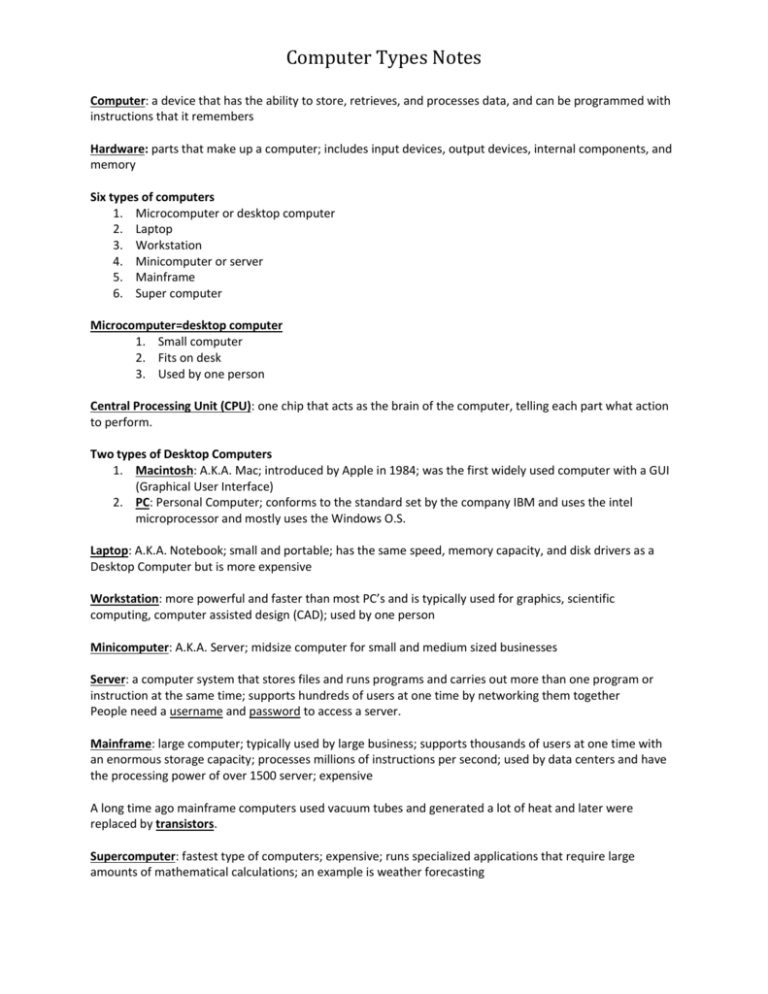Computer Types: Microcomputers to Supercomputers
advertisement

Computer Types Notes Computer: a device that has the ability to store, retrieves, and processes data, and can be programmed with instructions that it remembers Hardware: parts that make up a computer; includes input devices, output devices, internal components, and memory Six types of computers 1. Microcomputer or desktop computer 2. Laptop 3. Workstation 4. Minicomputer or server 5. Mainframe 6. Super computer Microcomputer=desktop computer 1. Small computer 2. Fits on desk 3. Used by one person Central Processing Unit (CPU): one chip that acts as the brain of the computer, telling each part what action to perform. Two types of Desktop Computers 1. Macintosh: A.K.A. Mac; introduced by Apple in 1984; was the first widely used computer with a GUI (Graphical User Interface) 2. PC: Personal Computer; conforms to the standard set by the company IBM and uses the intel microprocessor and mostly uses the Windows O.S. Laptop: A.K.A. Notebook; small and portable; has the same speed, memory capacity, and disk drivers as a Desktop Computer but is more expensive Workstation: more powerful and faster than most PC’s and is typically used for graphics, scientific computing, computer assisted design (CAD); used by one person Minicomputer: A.K.A. Server; midsize computer for small and medium sized businesses Server: a computer system that stores files and runs programs and carries out more than one program or instruction at the same time; supports hundreds of users at one time by networking them together People need a username and password to access a server. Mainframe: large computer; typically used by large business; supports thousands of users at one time with an enormous storage capacity; processes millions of instructions per second; used by data centers and have the processing power of over 1500 server; expensive A long time ago mainframe computers used vacuum tubes and generated a lot of heat and later were replaced by transistors. Supercomputer: fastest type of computers; expensive; runs specialized applications that require large amounts of mathematical calculations; an example is weather forecasting











